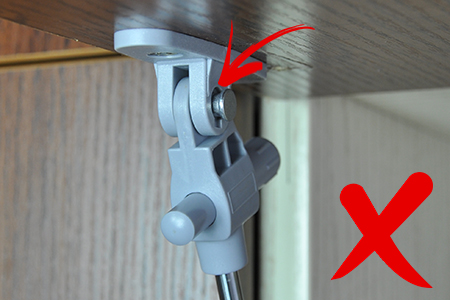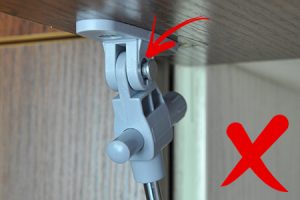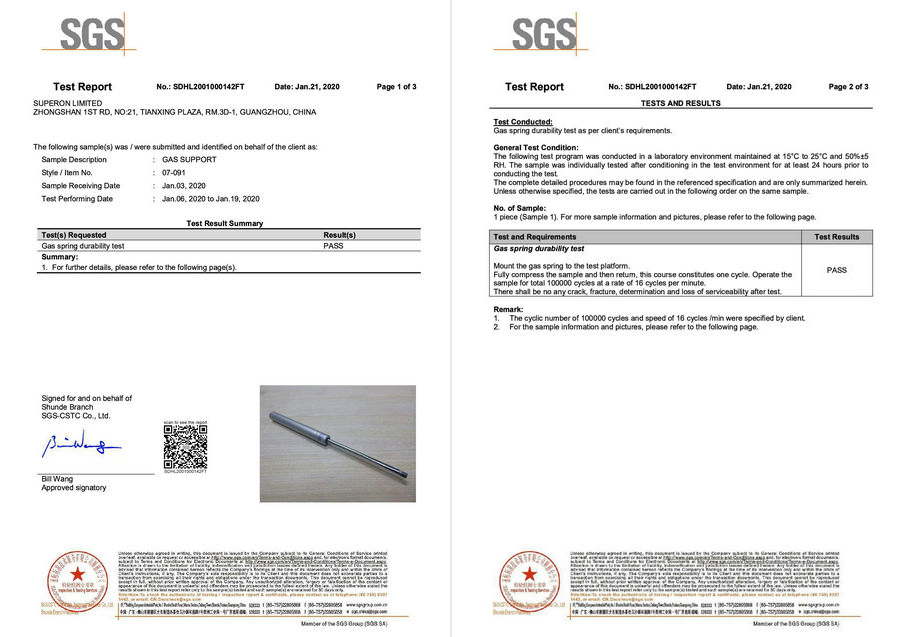Soft-closing gas supports have been around since a few years back. As usual with new products, flaws and errors in construction were discovered over time, and improved and perfected as a result. In this article, we will go over the main aspects that affect the function of a gas support and that should be considered when choosing a gas support. We’re not attempting to explain the installation process, but rather look at frequent questions regarding product quality and the difference between a high and low quality gas support, which could be affected by opting for cheaper production or other compromises. We will also guide you through our process of checking and testing products and finding defects or problematic areas. This article is designed for professional consumers that purchase such products for trade (importers, wholesale companies), as well as those buying for production (technical departments or furniture manufacturers).
A soft-closing gas support is a standard gas support with a damper built into one of its fittings. The quality of the damper, among other things, will influence how well the product functions. We will start from here.
The damper needs to withstand the initial impact of the door, after which it will allow the door to close by dampening its force. Looking at the video below, we can see that the first damper absorbs the impact of the door, then allows it to close softly. The second damper shown does not absorb the impact of the closing door, but rather slows its speed. Because of this, the door does not soft-close properly; it simply shuts with less force.
(at 0:27 starting to show product #2 and #3)
Another important thing to consider is the angle at which the door needs to be opened for the damper to work. With the first damper, it is enough to open the door to about 10˚ for the damper to stop the door from slamming shut. Dampers 2 and 3 require a full opening for the damper to absorb any impact. If the door is opened to only 10˚, it is simply not enough for the damper to function. In a real life situation this would mean that when a husband opens the kitchen cabinet to reach in for a jar of spices or a pack of pasta and lets go of the door, he will hear it slam shut despite having asked for a kitchen with all doors fitted with dampers.
(at 0:23 starting to show product #2 and #3)
The shock-absorbing effect of the damper can be adjusted by moving the damper front and back, which is why the damper comes with a thread. For heavier doors, the damper can be adjusted forward (towards the door) so that it can absorb its impact earlier. For lighter doors, the damper can be adjusted back so that the mass of the door will be enough for it to close fully. The ability to adjust the damper has already become the standard with this product, although there are manufacturers that produce non-adjustable dampers. The quality of the thread that holds the damper is important for effective adjustment. If the thread is of low quality, it could be difficult to adjust it if the thread is too tight, or the damper will become displaced if the thread is too loose.
There is another obvious, yet common problem we see with product quality – this is the creak produced while the gas support is in use. It is caused by incompatibility between the size of the fitting and an unsuitable type of plastic. Some manufacturers use “soft” plastic. It doesn’t creak, but begins to deform after extended use, which can cause the fitting to get displaced. Hard plastic will inevitably creak at the point where two moving parts meet.
Some manufacturers use a steel pin to connect the parts of the fitting. Results from our own tests show that the pin came out of the fitting after being opened about 500 times. This happens because the pin is not fixed, and therefore turns and gradually comes out when opened.
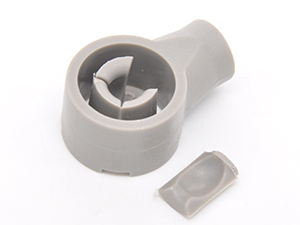
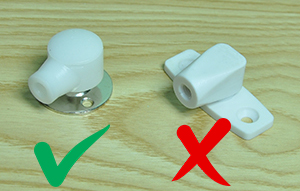
The durability and reliability of a gas support is tested with a test for cycles of opening. For this we use a test frame in our testing room. After selecting the product that meets our requirements, we send it off to a specialized testing organization, such as SGS, to confirm the product’s quality and receive a certificate. Our gas support passed a test for 100,000 cycles of opening, as shown in the certificate below.
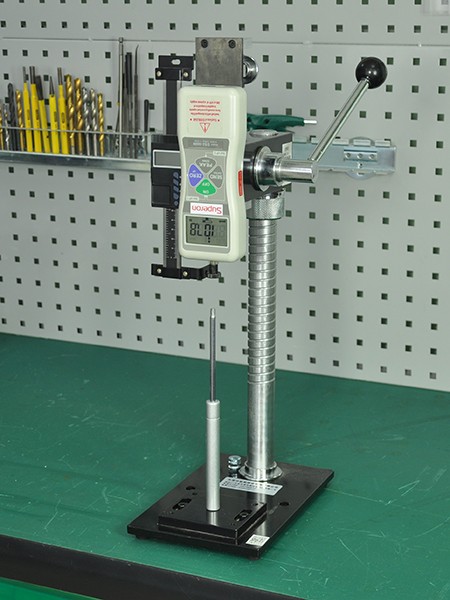
A frequently asked question is whether to install the gas support with the thick side up or down, and whether this is different for a gas support with a damper. Gas supports are generally installed thick side up, both regular ones and those with dampers. However, we haven’t found much of a difference in function and use, so it is however the master sees fit.
To test our gas supports, we have installed automatic frames in our test room, which emulate the actual movement of a door with a damper. The final phase of door closure happens naturally, without the use of a motor. The video shows the frame in testing position. Moreover, we put our gas supports on an actual cabinet, since nothing else will display the product’s function like actual use.
Music: www.bensound.com
All photos and videos in this article were taken in our test room. As you saw on video, damper #1, mentioned in this article, in the one we suggest to our clients (article 07-097, www.superon.cn/07-097). The other products did not pass our testing and selection process, and are therefore not included in our selection and not offered to our clients, despite them being cheaper.
Do other suppliers test their products the same as we do?
